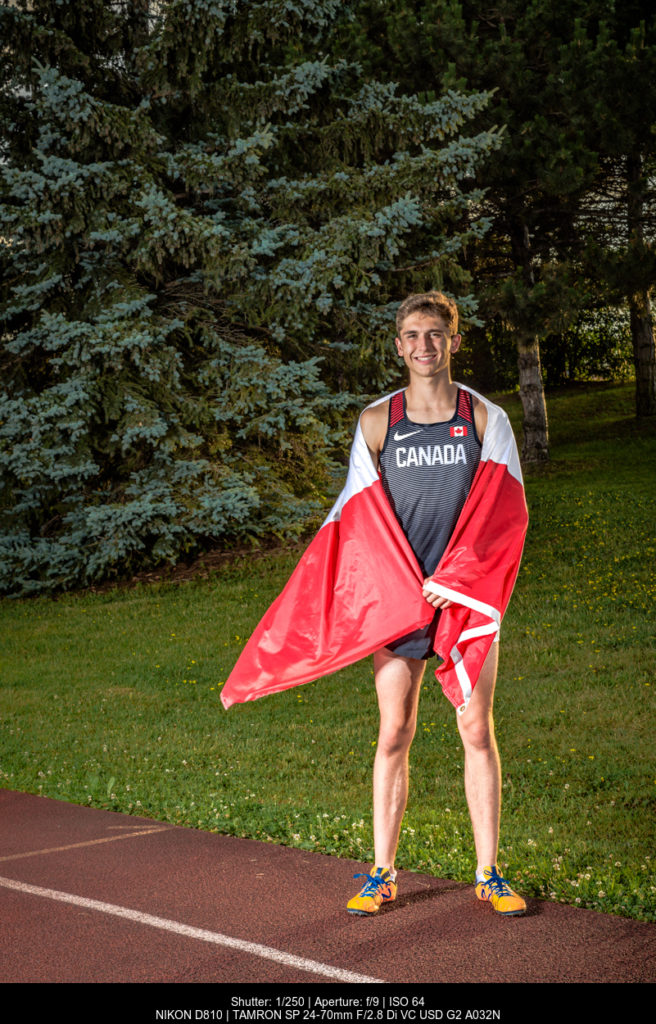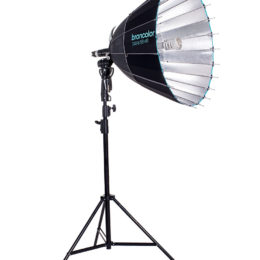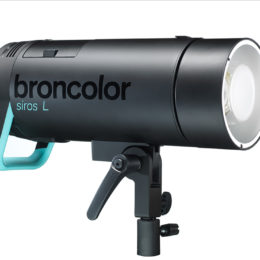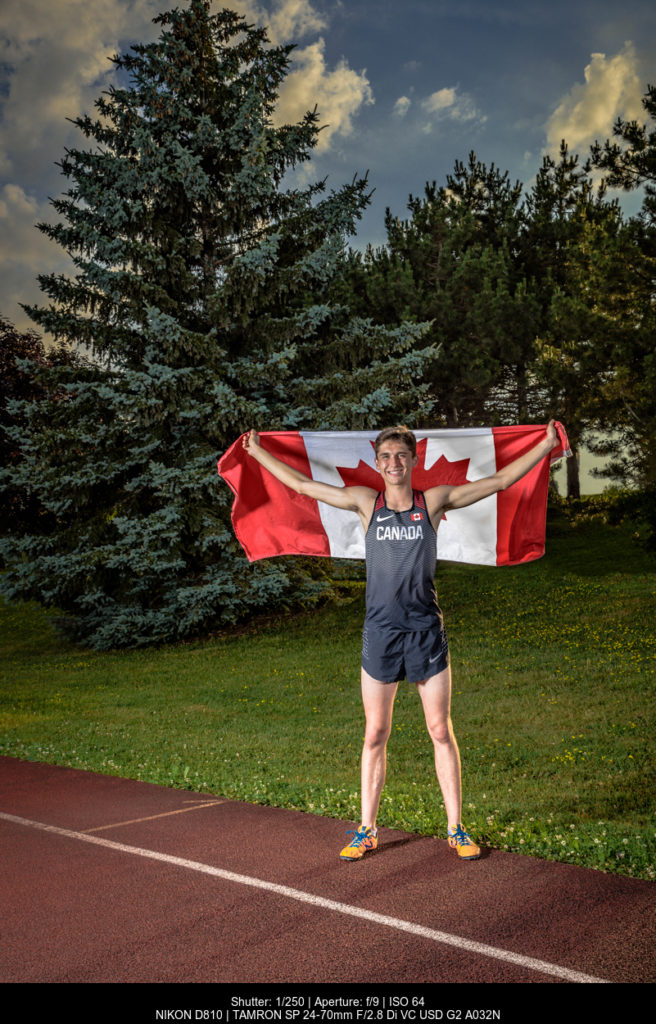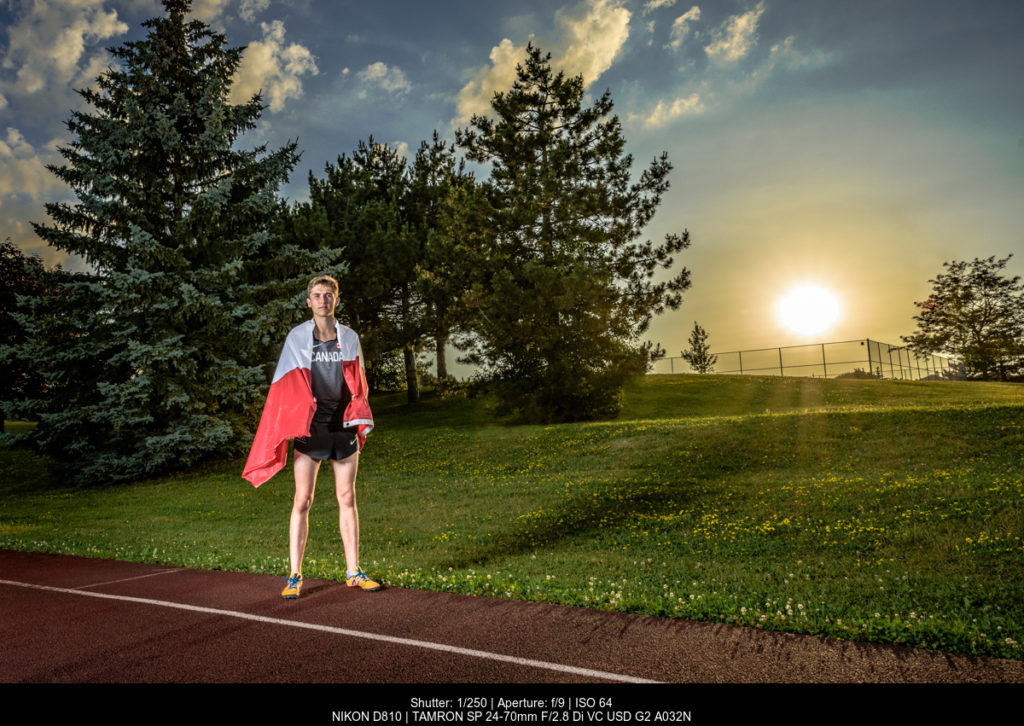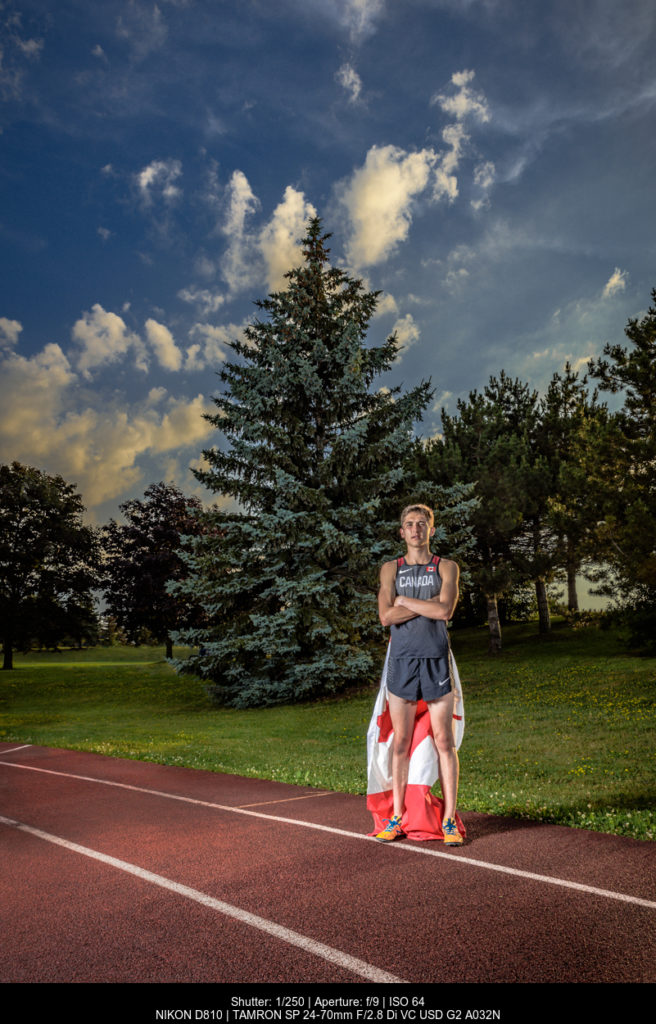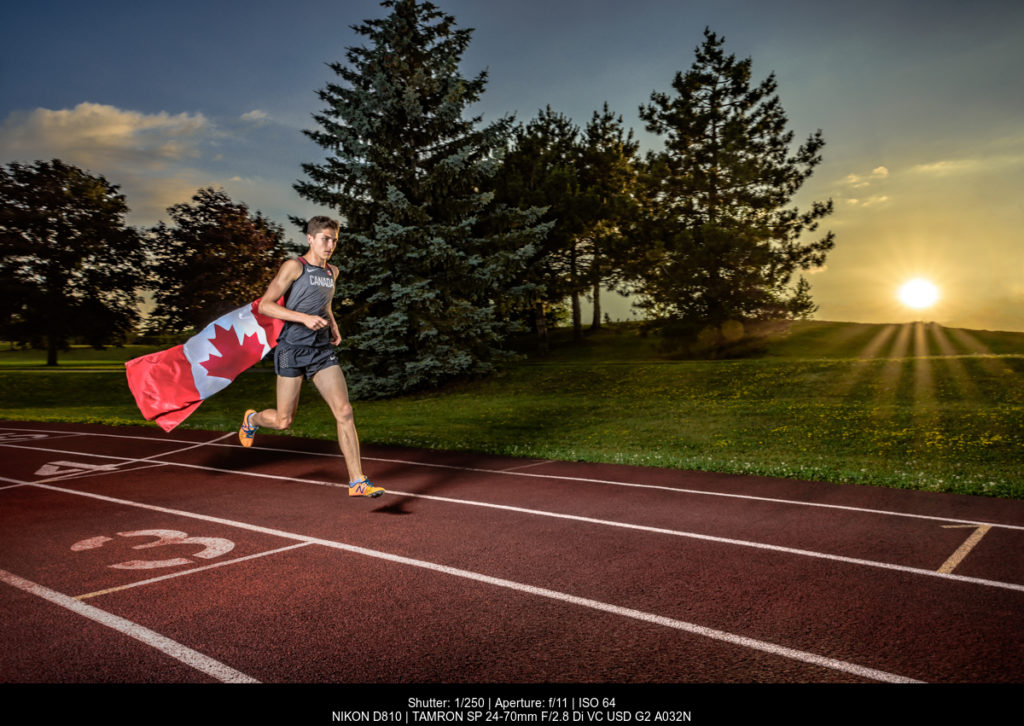I recently learned that that one of the young men whom I coached soccer and hockey was selected by Athletics Canada to represent our country at the 2018 IAAF World U20 Championships in Tampere, Finland. I was ecstatic for Max and really proud of him – he was going to compete in the 10,000 metres against some of the best runners in the world. You can view Max’s IAAF results here.
Max is one of those kids you wanted on your team – friendly, polite and a quiet, confident leader on and off the playing surface. He knows how to have fun and enjoy whatever game he’s playing. I wanted to help him remember this moment – it’s not often you called to join Team Canada. I asked if he was up for a shoot and he was in.
While waiting for Max to get his official uniform, I scouted nearby locations, opting for a local track that had a decent background. I wanted the sun in the images, which meant a clean view to the West was necessary. The other variable was weather – we had had weeks of blue sky with very few clouds. This might be pleasant weather, but it is far from photogenic, but there was an upcoming day with rain forecasted through the day with a variably cloudy evening – this should be perfect! Date and time was set.
On the day of the shoot, it rained. Buckets! Cats and dogs! The radar map showed the rain would break in the late afternoon, so I charged all my batteries. My trusty assistant/son and I went over to the track early to get everything setup.
I chose the broncolor Move 1200 L para kit for my key light. The 1200ws would be more than enough to overpower the bright summer sun. The para 88 is my favourite light shaper – nothing manipulates light like a para. I slightly focused the para to get the maximum light coverage while retaining that magical “para” light shaping. Also, I used a Siros 800 L with a P65 reflector and Strip Grid as a fill light.
My first camera setting was an easy one: I used the lowest native ISO of my Nikon D810 (ISO64) to keep the sky a rich blue and get maximum dynamic range.
There were two things I wanted to get out of these images – a nicely rendered “sun star” and an image of Max running. The challenge was that both of these require different techniques. To capture perfect sun stars, you need a small aperture (f/16 or smaller), which would require a lot of light. However, to freeze action, I would need a faster shutter speed and/or faster flash duration. It’s a good thing my broncolor lights had me covered on both fronts. Read on …
We started off with a few static images of Max holding a Canada flag. I metered for the sky (ISO64, 1/250, f/9). Since I was using the Tamron SP 24-70mm F/2.8 G2, I was right in the sweet spot of that lens.
My Move pack was at half power, with the para 88 about 3 metres away. My Siros 800 L was about 4 metres away, at ¼ power, with the Strip Grid oriented vertically to just give a touch of fill to Max. The Strip Grid creates a unique oval-shaped pattern of light – perfect for isolating or illuminating something tall and narrow, like a person. I used the sun as a rim/accent light.
Now that the sun was in position for the key image I was after, I knew we had to work fast. I needed to stop down my lens to get that perfect sun star. f/18 created a gorgeous sun star, but I had to move my lights closer to Max. I had both lights at full power now because of the small aperture.
I settled on f/11, as the sun star was still attractive and the sun wasn’t blown out. I was firing at about ¾ power at this point, so it was time to get Max running. We clipped the Canada flag to his jersey like a cape – we now had “Super MAX!”
The very first thing I noticed was a motion blur from the flash. When flashes and strobes are fired at higher power, the flash duration (length of time the flash illuminates) is lengthened. Many lesser flashes have a full power flash duration of 1/200s, which is slower than my shutter speed. The flash creates the blur which I’m trying NOT to have.
Thankfully, I’m using broncolor and not a lesser flash system. With my Move 1200 L, my assistant enabled “Speed” mode and changed the flash duration to “Minimum” in the menu. I now had a flash duration of 1/935s (displayed on the screen) at 600ws.
When using two lights where flash duration is so important, you need to ensure both lights have the same flash duration or you could wind up with motion blur. The bronControl app allows me to control certain broncolor lights from my phone and lets me see flash durations. I enabled Speed mode on my Siros 800L and adjusted power until I had a flash duration close to the Move – 1/880s at 8.8.
I tried Autofocus tracking. However, Max was starting out of the frame and it turned out to be too much of a challenge. Therefore, I pre-focused on a spot and used a slight panning motion, which had the added benefit of creating motion blur in the background.
Max ran past my camera few times, as I was trying to get both of his feet in the air. It took a few tries but we nailed it. This is one of the reasons I love working with professional athletes – you tell them what you want from the image and where they need to be to create that image. The athlete will adjust to help you capture your vision.
This was a really fun shoot that presented a few challenges that my broncolor lighting was ready for. I needed a lot of light to illuminate the small aperture for the sun star AND I needed a fast flash duration to freeze the action of Max running with his “Canada Flag Cape” flowing behind him.
How did Max finish at the u20 World Championships? Top North American and 22nd overall! What a great result!! https://www.iaaf.org/competitions/iaaf-world-u20-championships/iaaf-world-u20-championships-tampere-2018-6082/results/men/10000-metres/final/result

About the Author – Will Prentice (www.capturaphoto.ca) is a professional photographer based out of Whitby, Ontario and Brand Specialist – Lighting for Amplis.



